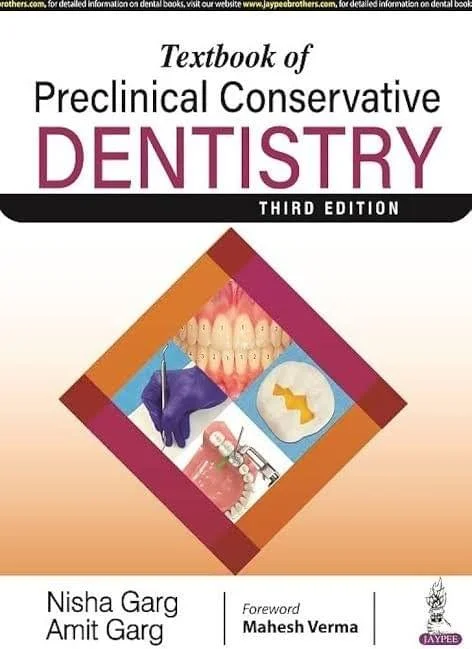For centuries, medical books have served as the cornerstone of health care and medicine, offering a pathway to the human body’s mysteries, diseases, treatments, and healing methods. These texts, far from being mere collections of knowledge, represent the cumulative wisdom of countless generations of doctors, researchers, and healthcare pioneers who devoted their lives to unraveling the complexities of human physiology, pathology, and treatment strategies.
In a world where medical technology and practices continue to evolve at an astonishing rate, the importance of medical books has not diminished. In fact, they continue to play a critical role in shaping modern healthcare, offering not only foundational knowledge to medical students and professionals but also a historical perspective that helps us appreciate how far medicine has come—and how far it still has to go. These books often straddle the delicate balance between traditional medical knowledge and the latest advancements in scientific research, giving their readers a rich, well-rounded understanding of healthcare.
A Brief History of Medical Books: From Antiquity to the Modern Era
The history of medical books is as old as the history of civilization itself. In ancient times, early civilizations recorded medical knowledge on clay tablets and papyrus scrolls, documenting methods for diagnosing and treating diseases, surgical procedures, and even pharmacological remedies. One of the earliest known medical texts is the Ebers Papyrus from Ancient Egypt, dating back to around 1550 BCE. This text contains a treasure trove of information on anatomy, physiology, and treatments for various ailments using herbs and other natural remedies.
In Ancient Greece, the influence of thinkers such as Hippocrates, known as the “Father of Medicine,” and Galen, a Roman physician, transformed medicine into a more systematic science. Hippocrates’ Corpus Hippocraticum laid the foundation for medical ethics and clinical practices, many of which are still relevant today. In the Middle Ages, Islamic scholars like Avicenna in the East translated and expanded on these Greek texts. Avicenna’s Canon of Medicine, written in the 11th century, became one of the most authoritative medical texts of its time, influencing European and Islamic medical practices for centuries.
Fast forward to the Renaissance, and the invention of the printing press by Johannes Gutenberg revolutionized the dissemination of medical knowledge. Medical books were no longer restricted to handwritten manuscripts accessible only to a few. Pioneers such as Andreas Vesalius, who wrote De humani corporis fabrica in 1543, advanced the study of anatomy through detailed illustrations and descriptions of the human body, laying the groundwork for modern anatomy.
In modern times, medical books have continued to evolve. The development of scientific research methods, medical imaging, and biotechnology has led to an explosion of specialized knowledge. Contemporary medical textbooks, like Gray’s Anatomy, serve as indispensable guides for medical students, clinicians, and surgeons, while others, such as Harrison’s Principles of Internal Medicine, provide comprehensive references on disease mechanisms, diagnosis, and treatment.
The Role of Medical Books in Medical Education
Medical education is one of the most demanding and rigorous academic disciplines, requiring years of study, practice, and continuous learning. In this journey, medical books play an irreplaceable role in shaping the foundational understanding of budding healthcare professionals. These texts are not merely books; they are tools that ignite curiosity, foster critical thinking, and serve as essential references throughout a medical professional’s career.
For medical students, textbooks offer a structured approach to the often overwhelming amount of information that needs to be absorbed. Anatomy, for example, is one of the most foundational subjects for anyone entering the medical field. Gray’s Anatomy, first published in 1858 and continually updated, is a testament to the staying power of a well-written medical book. Its detailed descriptions and illustrations of the human body’s structure have made it a staple for generations of medical students. The depth of information allows students to not only memorize anatomical structures but also understand their functions and relationships within the body.
Beyond anatomy, fields such as pathology, pharmacology, and physiology also rely heavily on textbooks. Robbins and Cotran Pathologic Basis of Disease is a widely-used resource that helps students understand the mechanisms of disease, providing insight into the cellular and molecular basis of illnesses, which is crucial for diagnosing and treating patients. Similarly, Guyton and Hall Textbook of Medical Physiology offers comprehensive explanations of how the body’s systems work together, helping students grasp complex physiological concepts.
Medical books, in this sense, are the scaffolding upon which the entire educational experience is built. They provide both a deep dive into specialized topics and a broad overview of various medical disciplines, offering the context needed for practical application in real-world settings.
Medical Books as a Continuous Learning Tool for Professionals
For practicing physicians and healthcare providers, medical books are more than relics of their formal education—they are tools for continuous learning. Medicine is a dynamic field, where new discoveries and treatments regularly emerge. Doctors and specialists are required to stay abreast of these developments to provide the best care possible for their patients. Medical books offer an authoritative reference to understand new research, explore cutting-edge treatments, and refresh knowledge on complex medical conditions.
Specialized texts, such as Braunwald’s Heart Disease for cardiologists or Williams Obstetrics for obstetricians, serve as invaluable resources for practitioners. These books not only provide detailed and up-to-date information but also distill the vast amount of medical literature into actionable knowledge that can be applied in clinical practice. The Merck Manual and UpToDate, both available in physical and online formats, are popular reference materials that are regularly updated, helping healthcare professionals navigate the complexities of patient care and clinical decision-making.
Moreover, these books help physicians keep up with advances in medical technology and therapeutic techniques. For example, with the advent of personalized medicine and genomics, books like Genomic and Precision Medicine offer insight into how individual genetic profiles influence treatment responses, a topic that has gained immense importance in cancer treatment and other fields.
Medical Books and Their Influence on Research and Innovation
Medical books also serve as a platform for innovation and research. They not only consolidate existing knowledge but also inspire new discoveries. Many breakthroughs in medicine have occurred when researchers built on knowledge gleaned from earlier works. For example, Sir William Osler, often referred to as the “father of modern medicine,” revolutionized medical education with his book The Principles and Practice of Medicine, which integrated clinical and laboratory findings in the diagnosis and treatment of diseases. Osler’s work inspired generations of physicians to adopt a more scientific, evidence-based approach to patient care.
In the modern era, medical books continue to stimulate research by offering frameworks for understanding complex diseases, suggesting new avenues for investigation, and compiling case studies that highlight unusual conditions or treatment responses. They act as an intellectual bridge between basic science and clinical practice, helping researchers translate their findings into therapies that benefit patients. Books like Molecular Biology of the Cell and The Immune System have become seminal works in fields like immunology and cell biology, providing the foundational knowledge necessary for breakthroughs in areas such as cancer immunotherapy and regenerative medicine.
The Ethical Dimension of Medical Books
Medical books also play a crucial role in shaping the ethical landscape of healthcare. Medical ethics is a discipline that addresses the moral dilemmas that arise in the practice of medicine. Texts such as Principles of Biomedical Ethics by Beauchamp and Childress are often used to teach students about the ethical principles of autonomy, beneficence, non-maleficence, and justice. These principles guide decision-making processes in scenarios involving end-of-life care, patient autonomy, and the distribution of healthcare resources.
Furthermore, medical books raise awareness about the social determinants of health and the importance of equitable healthcare. Books like The Spirit Catches You and You Fall Down by Anne Fadiman emphasize the challenges that arise when cultural beliefs intersect with medical practice, prompting healthcare professionals to consider the broader context of their patients’ lives.
The Digital Revolution and Medical Books
In the digital age, medical books have undergone a transformation. Many of the world’s leading medical textbooks are now available online, offering a level of accessibility that was once unimaginable. Platforms like Elsevier, AccessMedicine, and ClinicalKey provide a wealth of resources to medical professionals and students, including e-books, journals, multimedia tools, and interactive learning modules.
This shift to digital platforms has democratized access to medical knowledge, making it easier for professionals in even the most remote parts of the world to access the latest information. It has also enabled rapid updates to textbooks, ensuring that the content remains current in a field that is constantly evolving. However, this transition also raises questions about the future of physical medical books. While the convenience and accessibility of digital resources cannot be denied, there is still a certain depth of engagement that comes from reading and annotating a physical text—a tactile experience that many medical professionals continue to value.
The Everlasting Significance of Medical Books
In an era where information is increasingly accessible at our fingertips, medical books continue to hold immense value. They are not merely repositories of knowledge but are living documents that capture the evolution of medicine over centuries. They guide students, inform professionals, inspire researchers, and provide ethical frameworks that help us navigate the complexities of healthcare.
As medicine advances, medical books will continue to evolve, integrating new discoveries, technologies, and ethical considerations. Whether in their traditional physical form or as part of a vast digital library, these books will remain essential to the practice of medicine, ensuring that each new generation of healthcare providers is well-equipped to face the challenges of an ever-changing medical landscape









